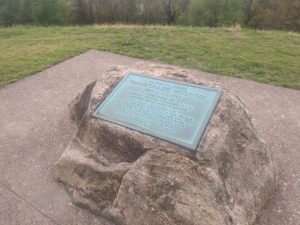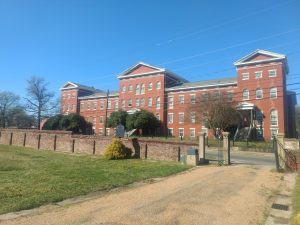Notes on Richmond’s Civil War Hospitals

Recently, while doing some research on Richmond’s hospitals, a few interesting trends and stats stood out to me, which I will share here. The city became home to dozens of hospitals over the course of the war. Centrally located and easily accessible by rail from the battlefields of Virginia, the capital overflowed with wounded after each major engagement.
Four categories of hospitals emerged during the war: military hospitals, state-supported hospitals, private homes, and charitable group-run hospitals. They all co-existed, and many smaller ones opened and closed in short periods of time.

The Confederate government established 28 General Hospitals, numbered 1-28. These facilities were often in tobacco factories (brick buildings used to process tobacco) or warehouses in the city’s downtown. There were also several large ‘platform’ hospitals- sprawling complexes that covered dozens of acres and included up to 100 separate buildings. This class included the large hospitals at Winder, Chimborazo, and Howard’s Grove. This was a new design that encouraged open air, cleanliness, and improved management, and included barracks for the patients, laundries and kitchens, etc.
Various states supported their troops serving in far-away Virginia by sending money and supplies to state-sponsored hospitals. Examples include the South Carolina, Louisiana, and Texas Hospitals, and the three Alabama Hospitals. Again, they often used tobacco factories.

During the Seven Days’ Campaign outside of Richmond, the city was overwhelmed with wounded, and numerous private homes were offered for hospitals. Most were used only temporarily, from June-August of 1862, but some remained in use much longer. Operated on a much smaller scale, care was often superior due to the more personal nature of the operation.

Finally, various churches and other charitable groups organized relief efforts and opened their doors to the sick and wounded. The Richmond YMCA and Masonic Lodge also established hospitals.
Banks, hotels, and various buildings of nearly every description were also pressed into service, often for just a few weeks or months. Some of the prisons for Union POWs also had hospital facilities. Providing care for the enemy sometimes sparked outrage, as one Richmond newspaper noted, “The Yankees have all they desire and more than they deserve.”
In all, I have identified about 100 separate hospitals in the city during the war. Not all existed at the same time; over the course of the war new ones opened and some closed or were consolidated. In total, nearly half a million patients passed through these various facilities.
Over time, the Confederate medical department tried to close private hospitals and consolidate smaller ones into the larger facilitates. This made it easier to manage the hospital system.
The upshot is, the city was one vast complex of hospitals, and the impact of this on the population cannot be overstated. Male slaves were rented by hospitals to serve as nurses or laborers, white and black women worked as matrons. There were surgeons, assistant surgeons, dentists, druggists, cooks, wagon drivers, grave diggers, the list was endless. The need for food, medicine, fuel, wagons, and other supplies was constant.

That realization made me stop and think: nearly every resident of Richmond knew someone who worked at a hospital or had a connection to one. Richmond’s pre-war population was 38,000 residents, swelling to an estimated 100,000 by 1865.
An estimated 3,000 workers labored in the hospitals. Going with the larger population number, my estimate is that one out of every 33 city residents worked in a hospital, or had some daily contact with one.
Furthermore, with half a million patients passing through the city, Richmond hosted five times its swelled wartime civilian population in wounded. This means that of the original 38,000 residents, over 13 times their numbers passed through their overcrowded city!
Bert – Great article! The book “Richmond’s Wartime Hospitals” [2005 Pelican] by Rebecca Calcutt is a good read for those interested in all the area hospitals. On a personal note for me: my daughter has been living in the Shockoe Center Apartments for two years. It is the old General Hospital #12 located at corner of 19th & East Franklin. Several old historic markers are attached to the old red brick to designate its use during the war. The apartment company did a great job restoring the place.
Thanks John! Yes, that is the best source on Richmond’s hospitals. I live in Church Hill and know exactly where your daughter’s apartment is. Nice to see that some of the old buildings have been saved, so many are lost.
Bert
GGF Pvt. Francis Burns, 13th Mississippi, Barksdale’s Brigade (after the previous BG got wounded) spent time in Chimbarozo after getting nailed at Garnett’s Farm in the Seven Days campaign. He rejoined the lads on the day of the battle of Sharpsburg. Reckon he turned around and marched back to Virginia. The Chimbarozo Museum is small, but very well done.
Thanks Mike. The patients at Chimborazo seem to have generally gotten good care.
Bert
Is there anything left of Winder?
Sadly, no, not even a marker. This area of Richmond has been all built over.